Search Images
Browse Content (p. 1547)

Image
Mosaic of Temple Facade with Torah Ark
Carpet mosaic depicting Temple facade with Torah Ark dating to the 4th century CE. Excavated at Khirbet es-Samarah.
Currently housed in the Israel Museum, Jerusalem.
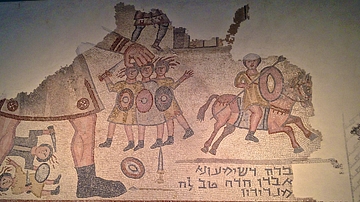
Image
Battling Giant
The oldest known synagogue mosaic with figurative motifs, this scene depicts a battle between a giant and soldiers armed with swords, shields, and lances. The soldiers are depicted as either wounded or dead. At the edge of the mosaic a cavalryman...
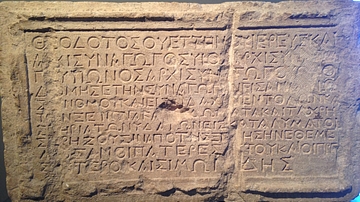
Image
Theodotos Inscription
This dedicatory building inscription was excavated near the Temple Mount and dates to the First Century BCE. An important find, it demonstrates that synagogues existed before the destruction of the Temple. Although they existed during that...
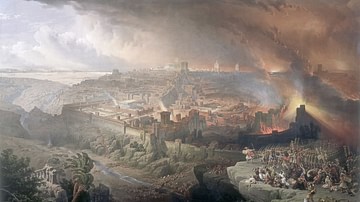
Image
The Siege and Destruction of Jerusalem
The Siege and Destruction of Jerusalem by the Romans Under the Command of Titus, 70 CE, Oil on canvas.
Painter: David Roberts, c. 1850 CE

Image
Mound of the Hostages, Hill of Tara
Mound of the Hostages, Hill of Tara, County Meath, Ireland, Neolithic era.

Image
Statue of St. Patrick, Hill of Tara
Statue of St. Patrick, Hill of Tara, County Meath, Ireland. Erected 2000 CE.
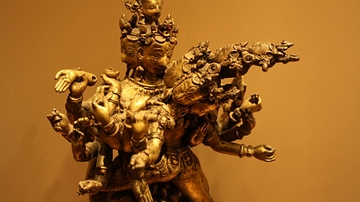
Image
Shrikantha Kamakala (Shiva) & Parvati
Gilded bronze figurine of Shrikantha Kamakala (Shiva) & Parvati. Nepal, 14th-18th century CE. (Museum of Asian Art, Corfu)
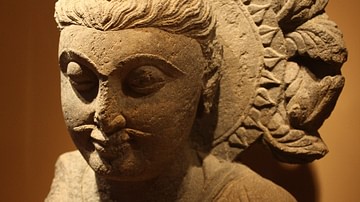
Image
Gandhara Buddha, Taxila
A bust of Buddha from Taxila, Gandhara. Grey-blue schist. 1st century CE. (Museum of Asian Art, Corfu)

Image
Kuan Ti - God of War
Kuan Ti, the Chinese deified general Guan Yu and god of War. Guan Yu died in 220 CE. Painted and gilded bronze. 14th - 17th century CE. (Museum of Asian Art, Corfu)

Image
Krishna
A bronze figure of Krishna. 14-17th century CE. (Museum of Asian Art, Corfu)